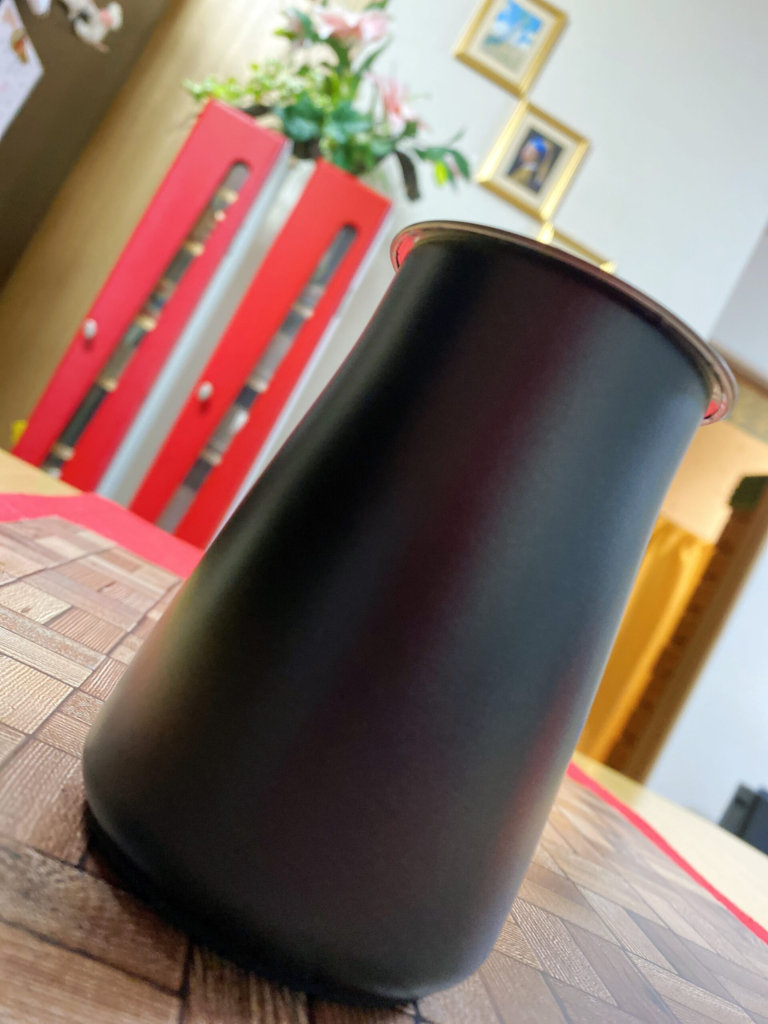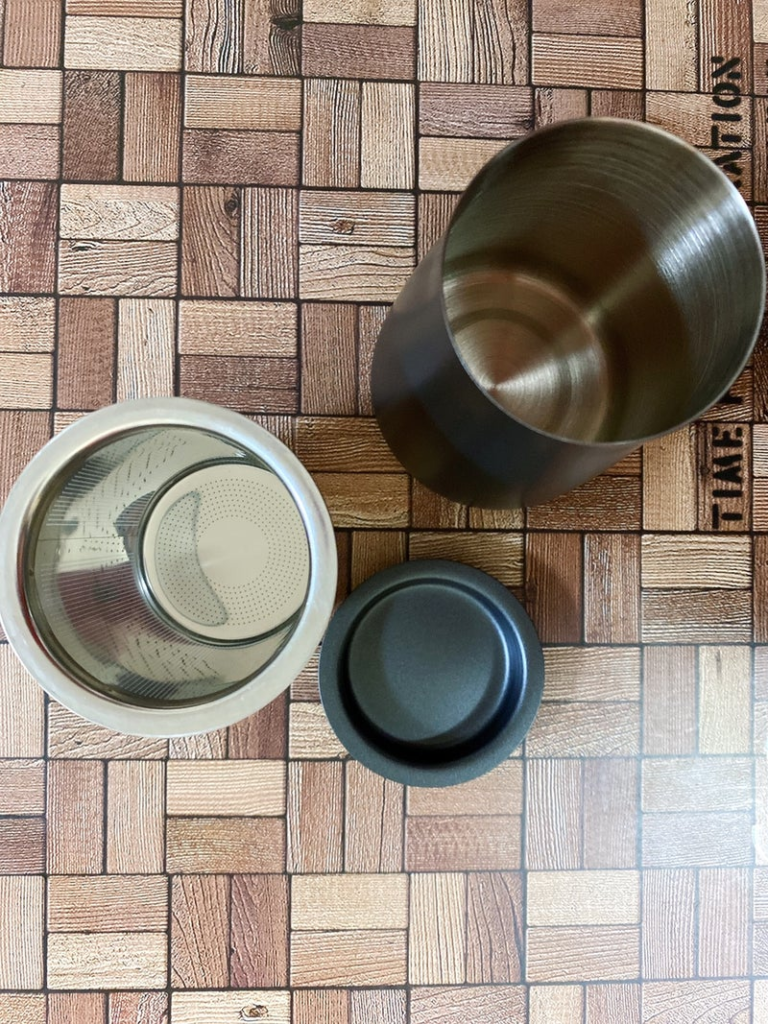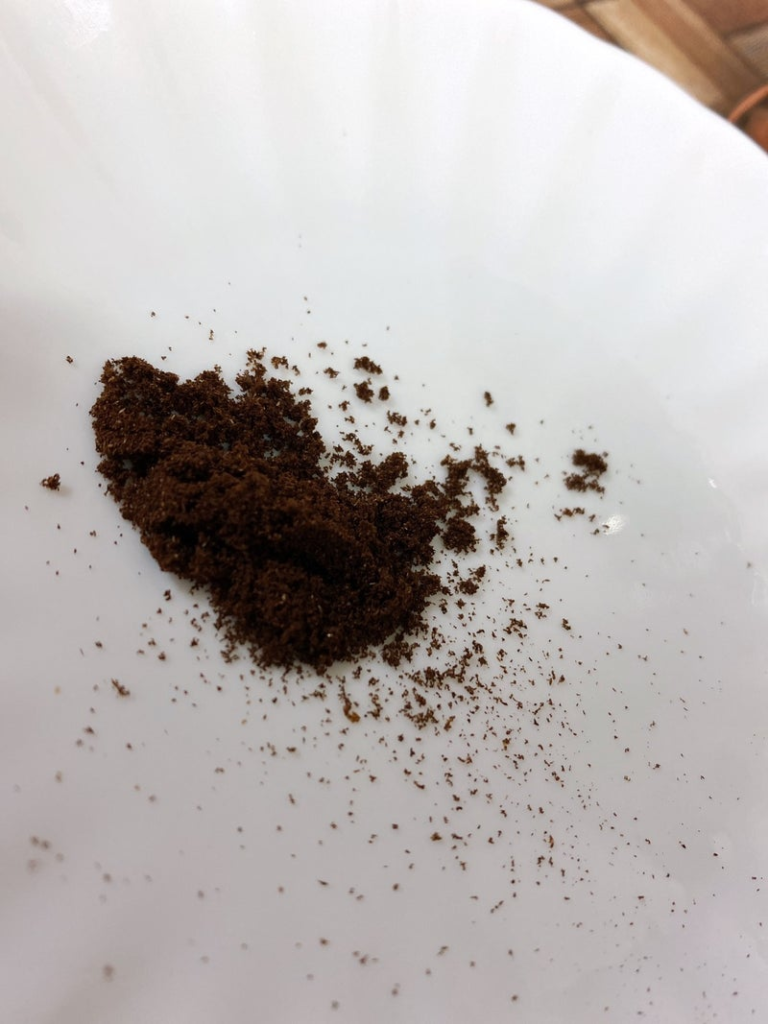
Hello, this is colorful beans.
In this article, I will explain and share my views on coffee grounds fines.
What are coffee grounds fines?
Coffee grounds fines are the variation in particle size of coffee grounds that occurs when coffee beans are ground into powder using a coffee mill. The finer the grind, the smaller and finer the particles become, until they resemble a powder-like consistency.
This refers to the very fine coffee particles that are mixed in with the ground coffee that is produced by the mill. The coarseness of coffee grounds is often described in terms of particle size or mesh, with fines referring to particles that are too small and fine to be seen individually.
To provide another example, let’s consider the difference between espresso and drip coffee. Espresso requires a very fine grind, while drip coffee requires a coarser grind.
If we examine the coffee grounds specifically for espresso, we wouldn’t necessarily describe them as fines, but rather as having a consistent particle size or mesh. However, if some of the very fine espresso grind particles were mixed in with the coarser drip coffee grind, then those would be considered fines.
Why do coffee grounds fines occur?
Why do coffee grounds fines occur in the first place? It can be said that it is unavoidable, but it depends on the performance of the coffee mill and the beans.
There are various performance differences among coffee mills, even with those that are said to have the most consistent mesh, fines will still be generated.
The amount of fines generated varies depending on the performance differences of the mill.
In the case of home use, the “Mirukko” grinder from Fuji Royal is known for its high performance, and it produces a very consistent grind.
“Mirukko” grinder from Fuji Royal HP GO
I also use it.
When it comes to espresso, I use a DeLonghi grinder, but there is quite a bit of variation in the grind size. This is not necessarily due to the grinder being bad, as the beans themselves can also be a factor.
If the grinder is the issue, check the blade for wear and tear, as this can cause inconsistency in the grind size and increase the amount of fines produced.
Roasted coffee beans become very soft compared to when they were green.
As the roast gets darker, the beans become even softer.
For a light roast, it takes a lot of force from your fingers or teeth to crush the beans, but for an extremely dark roast like Italian roast, they are so soft that they can be crushed just by pinching them with your fingers.
Because the size of the beans varies and the hardness changes depending on the roast level, fines will be produced no matter how high-performance the grinder is.
Does the presence of micro-fines result in bad coffee?
The key point of this article is as follows:
Is fines a bad thing? Do we need to remove fines? Does coffee taste bad with fines?
The answer is different for each individual…!!
It may sound like an unsatisfactory conclusion, but let’s explain further.
Firstly, when there is coffee dust, negative elements such as bitterness, astringency, and sourness are more likely to be present, which are referred to as “off-flavors.”
Each coffee particle contains both positive elements such as umami, sweetness, acidity, richness, and negative elements such as bitterness, astringency, and sourness. Positive elements start to emerge at the beginning of the extraction process, while negative elements emerge later.
Extraction process: acidity → sweetness → richness → bitterness → astringency
Assuming that the particle size is uniform,the same components will dissolve from all particles.
Extraction begins → acidity → sweetness → body → bitterness → astringency, and then fine particles → acidity → sweetness → (astringency) body → (off-flavors).
When there is fine powder that is not uniform in size, negative elements such as bitterness, astringency, and off-tastes are more likely to be included, which are often referred to as “off-flavors”.
Each coffee bean contains both positive elements, such as umami, sweetness, acidity, and richness, as well as negative elements. Positive elements start to emerge at the beginning of extraction, while negative elements emerge later.
Assuming the particle size is consistent, all the components dissolve evenly from each particle. However, if there is fine powder with inconsistent particle size, the balance is disrupted, resulting in a taste that is less pleasant to those who dislike the inclusion of off-flavors. Nevertheless, taste preferences vary among individuals.
As a fundamental premise, whether you like or dislike the negative flavors referred to as “zatumi” is the key.
However, if we change the way we talk about these negative elements,
They can be described as unique, deep, complex, and having a wide range of flavors!
In other words, having a slight bitterness or astringency within the sweetness can make the sweetness stand out, or they can balance each other out to create a mellow and flavorful taste. You can enjoy a variety of flavors. Sometimes, it can be a powerful and punchy taste.
Don’t you feel that the way we express it can transform “zatumi” into deliciousness?
Removing fine particles can reduce the negative flavors and result in a clear, clean, and well-rounded taste. In other words, it can create a taste without character, strength, or uniqueness.
Alternatively, it can result in a clear, transparent, smooth, and easy-to-drink taste, which is elegant and refined.
Ultimately, the best way to determine one’s preference is through taste testing! However, the coffee industry is divided on this issue, and opinions and views can vary.
Phrases such as “fine particles are bad!”, “removing fine particles makes coffee taste better!”, “removing fine particles makes you a professional!” and “just removing fine particles can significantly improve the taste!” can be confusing, limiting, and may sound like imposing a single solution or idea onto consumers.
As mentioned in other articles, the enjoyment of coffee is diverse and individualized.
Providing information tailored to the individual drinker is important. Coffee is like a universe!
Information and explanations should be provided from various angles, and it is up to the drinkers to freely and enjoyably find their own ways to judge and decide. Finally, here’s a photo of a fine powder separator.

Simply put the powder into the mesh container with a two-layer structure, close the lid and shake it vigorously. This is a photo demonstration using coarse ground for our original blend coffee “Rainbow” 50g.

Removed fine powders 👇

Only 50g after grinding? Is it really just this amount? What are your impressions, everyone?
“I ordered it just for this article 😆”
Also, for espresso, it is ground extremely finely, with everything being as fine as powder, so it is less likely to contain fine particles.
Moreover, espresso is extracted rapidly at high pressure, so extraction is completed before any off-flavors can be extracted.
The “Matsuya-style drip” that I recommend uses coarsely ground beans, so it is more likely to contain fine particles.
Personally, I think everything is coffee, so I like the taste that does not remove fine particles.
However, I also like the taste that removes fine particles.
I enjoy the change in taste.
Pay attention to the changes in flavor due to the degree of roasting.
In the case of light roasts, the presence or absence of fine powder is less likely to make a big difference in flavor.
As the roast gets darker, the changes become more noticeable. While there is a change in flavor, how much off-flavor can come from such a small amount of fine powder?
As professionals say, can coffee really become so unpalatable due to the presence of off-flavors that it makes us frown?
To be honest, I think it’s within the margin of error. There are other factors that can have a bigger impact on flavor, such as water temperature, pouring technique, and infusion time, so those who are starting to explore coffee or have just started brewing should focus on improving their brewing skills to make better-tasting coffee.
We hope your coffee life and coffee time are enriched!
Thank you for reading this far.
Take care.




コメント